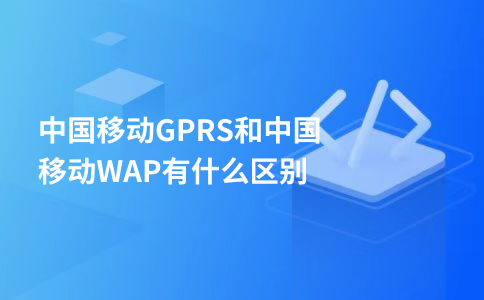The editor of Downcodes will take you to understand the differences between China Mobile's GPRS and WAP wireless communication technologies. GPRS and WAP were once widely used mobile communication technologies. Although they have been replaced by higher-speed network technologies, it is still important to understand the differences between them. This article will analyze the characteristics of GPRS and WAP in simple terms from six aspects: transmission technology, data rate, user experience, cost structure, security and application scope, to help readers better understand the advantages and disadvantages of these two technologies, as well as their position in the history of mobile communications development.
GPRS is a mobile data service available on GSM networks that allows data to be sent and received in the form of packets. This technology provides "always on" functionality and enables more efficient bandwidth utilization. WAP is a protocol standard for wireless communication on mobile devices, allowing devices to communicate with mobile data. Its focus is on optimizing the network content viewing experience on mobile devices.
In terms of speed, GPRS can usually provide speeds of 35-171 kbps, which is suitable for sending emails, browsing the web, and using instant messaging services. In comparison, WAP has a lower data transfer rate because it relies on early mobile communication technologies, such as CSD (Circuit Switched Data), which makes it less efficient when transmitting large amounts of data.
When users use GPRS, their experience is close to that of a traditional wired broadband connection, and they can continue to access the network without the need to connect and disconnect every time. The original intention of WAP's design is to optimize the mobile web browsing experience and adapt to the display screen and input method of mobile devices through special web design and simplified content format.
GPRS is usually charged according to the amount of data transmitted, and users will not incur charges when they do not use data services. WAP services may have different billing strategies, and some service providers may charge a fixed monthly fee or charge based on connection time.
GPRS has been strengthened in terms of security, providing end-to-end encryption to ensure the security of data transmission. Although WAP also has certain security measures, such as WAP 2.0 introducing a security layer similar to HTTPS, overall, GPRS is more reliable in terms of security.
GPRS has a wide range of applications, not only limited to mobile Internet access, but can also be used for M2M (machine to machine) communications, such as remote monitoring, vehicle communications, etc. WAP is mainly used for viewing mobile Internet content, such as news, weather forecasts, stock information, etc.
With the development of science and technology, GPRS and WAP, as early technologies of mobile communications, have gradually been replaced by higher-speed 3G, 4G and 5G technologies. However, they still occupy an important position in the history of mobile communications development and provide the basis for subsequent technological progress. laid the foundation.

FAQ:
Q: What are the main differences in use between GPRS and WAP? Answer: GPRS (General Packet Radio Service) is mainly a data transmission service that allows users to send and receive data through mobile phone networks. Users can always stay online via GPRS without the need to reconnect every time they access data services. WAP (Wireless Application Protocol) is an application protocol that allows mobile devices to access Internet content through a simplified interface, but does not maintain a permanent connection and usually requires re-establishing the connection for each access. Q: Why is WAP rarely heard nowadays, but GPRS is still mentioned? Answer: With the advancement of mobile Internet technology, especially the popularity of smartphones and fast 3G and 4G networks, WAP technology is gradually being eliminated due to its lower data speed and user experience. Modern mobile browsers can directly access standard Internet pages without the need for intermediate protocols such as WAP. As a data service technology, although GPRS cannot be compared with modern 3G or 4G networks in terms of speed, it still has its applications in some specific application scenarios (such as Internet of Things devices) due to the advantages of cost and energy consumption. space. Q: In terms of security, which one is better, GPRS or WAP? Answer: GPRS was designed with security in mind and provides end-to-end encryption to protect privacy and security during data transmission. The WAP protocol had weak security in early versions. Although subsequent versions added security features, such as the Secure Sockets Layer (similar to HTTPS) in WAP 2.0, overall GPRS is more powerful in terms of security. Q: What are the differences in the fee collection methods of China Mobile GPRS and China Mobile WAP? Answer: China Mobile GPRS usually charges based on the amount of data actually transmitted by the user, that is to say, the user will only incur charges when transmitting data. The charging methods for WAP services may be more diverse. In the early days, they may include charging by time or by traffic, and there may also be a fixed monthly fee. As the market develops and policies change, the specific charging methods may vary.I hope this analysis by the editor of Downcodes can help you better understand GPRS and WAP technology. Although they have been gradually phased out, understanding their characteristics helps us better understand the development process of mobile communication technology.